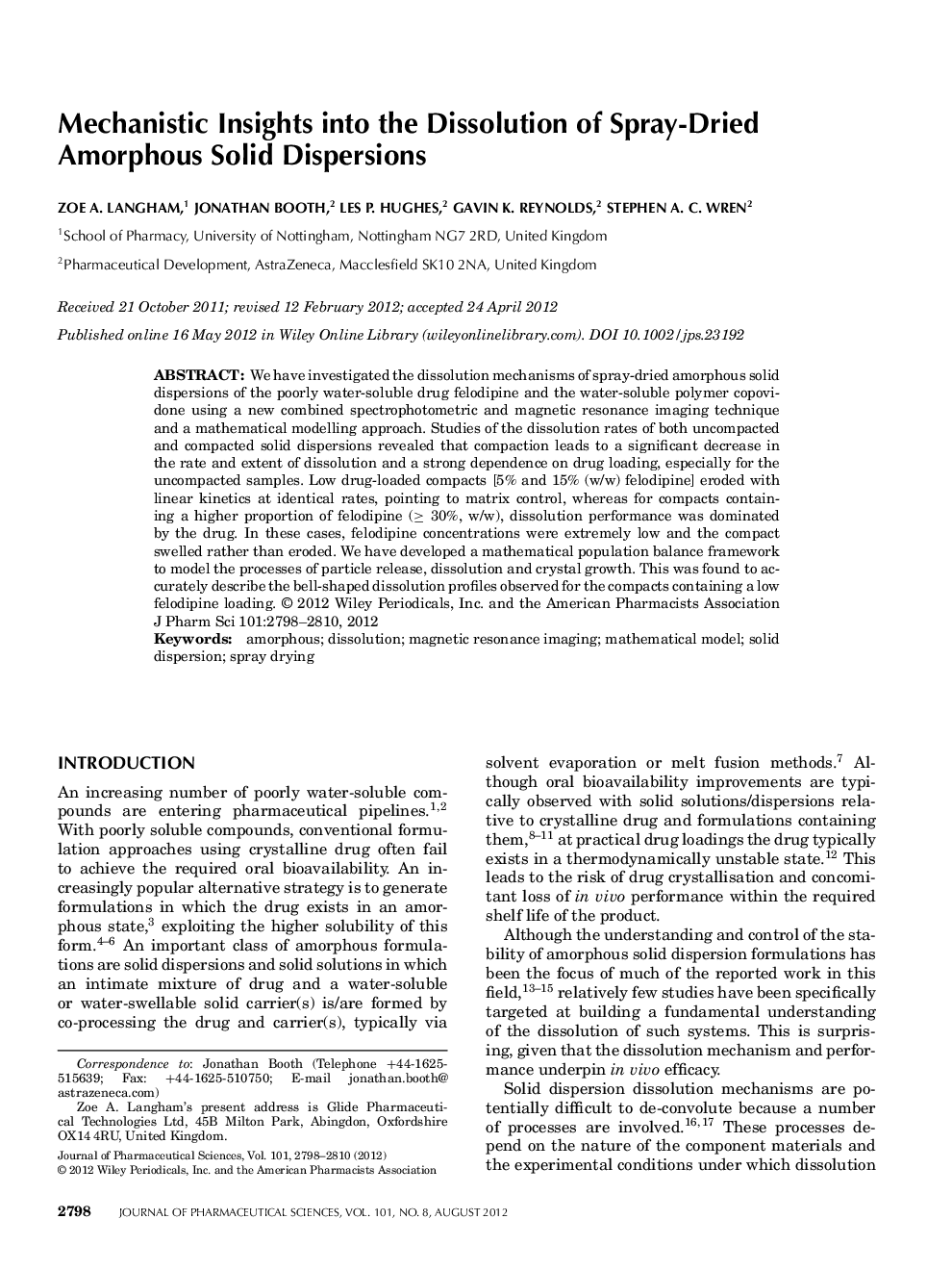| Article ID | Journal | Published Year | Pages | File Type |
|---|---|---|---|---|
| 10162793 | Journal of Pharmaceutical Sciences | 2012 | 13 Pages |
Abstract
We have investigated the dissolution mechanisms of spray-dried amorphous solid dispersions of the poorly water-soluble drug felodipine and the water-soluble polymer copovidone using a new combined spectrophotometric and magnetic resonance imaging technique and a mathematical modelling approach. Studies of the dissolution rates of both uncompacted and compacted solid dispersions revealed that compaction leads to a significant decrease in the rate and extent of dissolution and a strong dependence on drug loading, especially for the uncompacted samples. Low drug-loaded compacts [5% and 15% (w/w) felodipine] eroded with linear kinetics at identical rates, pointing to matrix control, whereas for compacts containing a higher proportion of felodipine (⥠30%, w/w), dissolution performance was dominated by the drug. In these cases, felodipine concentrations were extremely low and the compact swelled rather than eroded. We have developed a mathematical population balance framework to model the processes of particle release, dissolution and crystal growth. This was found to accurately describe the bell-shaped dissolution profiles observed for the compacts containing a low felodipine loading.
Keywords
Related Topics
Health Sciences
Pharmacology, Toxicology and Pharmaceutical Science
Drug Discovery
Authors
Zoe A. Langham, Jonathan Booth, Les P. Hughes, Gavin K. Reynolds, Stephen A.C. Wren,
